Wonton noodle soup, or Mì Hoành Thánh, is a delightful Vietnamese soup recipe comprising shrimp and pork wontons, chewy egg noodles, and a comforting broth. You can serve it on any occasion and for any meal; everyone loves this dish!
And the best thing is that it’s surprisingly easy and not that time-consuming to make. My recipe only takes a little more than an hour! So why hesitate? Scroll down to learn the best way to cook up wonton noodle soup at home!
What Is Mi Hoanh Thanh?
As you might have guessed from the name, wonton noodle soup is not a traditional Vietnamese recipe. In particular, Mi Hoanh Thanh came from Cantonese cuisine and was introduced in Vietnam by Chinese immigrants.
Mi Hoanh Thanh consists of 3 essential components: wonton dumplings, egg noodles, and broth. The dumplings can be made from various kinds of meat, but the version with ground pork and shrimp as the filling is the most popular.
The broth can be served together with the noodles or in a separate bowl. I use homemade chicken broth to make the soup, but some people also cook it with pork bones. In addition, vegetables, such as bok choy, chives, or bean sprouts, are also common add-ons.
Tools
Let’s start with the tools you will need for this recipe. There is no particularly special cookware here, so you shouldn’t have trouble gathering them all.
Ingredients
Next are the required ingredients. If you can’t find a certain one, I highly recommend looking for it in the nearest Asian store or market.
Directions
Finally, it’s time to cook up a storm! Here is the tasty Mi Hoanh Thanh recipe that you’ve been waiting for.
Step 1: Prepare the Ingredients
Cut the white radish into equal, round slices.
Finely chop the scallions.
Use the face of your knife to smash the shrimp. Doing this will improve the texture of the filling.
Step 2: Make The Filling
Combine the shrimp and ground pork in a bowl together with 1 tablespoon soy sauce, 1 teaspoon sesame oil, 1 tablespoon tapioca flour, 1 tablespoon minced garlic, 1.5 tablespoons sugar, 1 tablespoon salt, 1 tablespoon pepper, 1 tablespoon chopped scallions.
Mix well to infuse the filling with all the spices and seasonings.
Wrap the filling bowl with food wrap and refrigerate it for about 30 minutes.
Step 3: Cook The Broth
Pour the chicken broth and white radish into a pot. Cook it over medium heat for about 20 minutes. Afterward, season the broth with 1 tablespoon of sugar and 1 tablespoon of salt.
During the cooking process, remember to skim off the foam frequently for the clearest broth.
Step 4: Wrap The Wontons
While waiting for the broth to cook, move on to wrapping the wontons.
Scoop a spoonful of filling onto a wonton wrapper. Fold it by bringing the edges together, then gently seal the wrap (see the included photo and video for a clearer demonstration).
Note
Be gentle when wrapping the wonton in order not to tear the wrapper. You should also try to make the wontons even in size to help them cook better.
Repeat the above steps for the rest of the wrappers. If you have some leftover filling, you can shape it into small meatballs and cook them together with the wontons.
Step 5: Blanch The Noodles
Bring a pot of water to a boil over high heat. When the water has come to a full boil, add the noodles and stir them with chopsticks to prevent them from sticking together. After 3 minutes, drain them using a sieve, then transfer them to an ice bath.
Next, drain the noodles once more and put them in a bowl.
Step 6: Blanch The Bok Choy
Bring another pot of water to a boil. Blanch the bok choy for about 4 minutes, then put them into an ice bath.
Step 7: Cook The Wontons
Pour water into a pot, then immediately add the wontons. Boil the wontons for 5 to 7 minutes.
When you first add them to the pot, the wontons will sit at the bottom. During cooking, gently stir them using chopsticks to keep them from sticking to the pot. Once the wontons start floating above the water, they are cooked.
Note
Always add the wontons when the water is still at room temperature. If the water has already started boiling when you put the wontons in, the sudden change in temperature will tear the wrappers.
Step 8: Serve The Dish
Place the noodles in serving bowls and put the wontons and bok choy over them. Sprinkle fried garlic, scallions, and pepper on top. Pour the broth into the bowls and enjoy. If needed, you can reheat the broth a little before eating.
Useful Notes
Making Mi Hoanh Thanh is that hard, isn’t it? To help you get the perfect dish on the first try, I have some helpful notes that can greatly aid you during cooking.
Variations And Side Dish Suggestions
Check out this section for great side dishes to pair with your wonton noodle soup and ways to bring a twist to the original recipe.
How To Store Wonton Noodle Soup
The first rule to remember when storing wonton noodle soup is that you should put the noodles, dumplings, and broth in different airtight containers. Then, you can refrigerate them for about 3 to 5 days.
Another way to prolong the shelf life of this soup is to freeze them. I recommend spreading the wontons on a baking tray and flash-freezing them for about 15 minutes. Then, transfer them to a freezer-safe bag or container, and freeze them. You can store the dish for up to 3 months.
FAQs
You might have some questions about the recipe but worry not. Here are the answers to the most common questions about Vietnamese wonton noodle soup.
Mi Hoanh Thanh – The Dish You Didn’t Know You Need
The beauty of Mi Hoanh Thanh lies in its harmonious blend of flavors, textures, and aromas. As you savor each spoonful, I hope you are filled with warmth and a deeper appreciation for this iconic soup dish and Vietnamese cuisine.
Now, it’s your turn to don the apron and bring the recipe to life in your kitchen. I’d love to hear your thoughts and feedback, so please don’t hesitate to leave a comment. Also, don’t forget to like today’s post to show your love for Mi Hoanh Thanh, and share this post with friends and family!
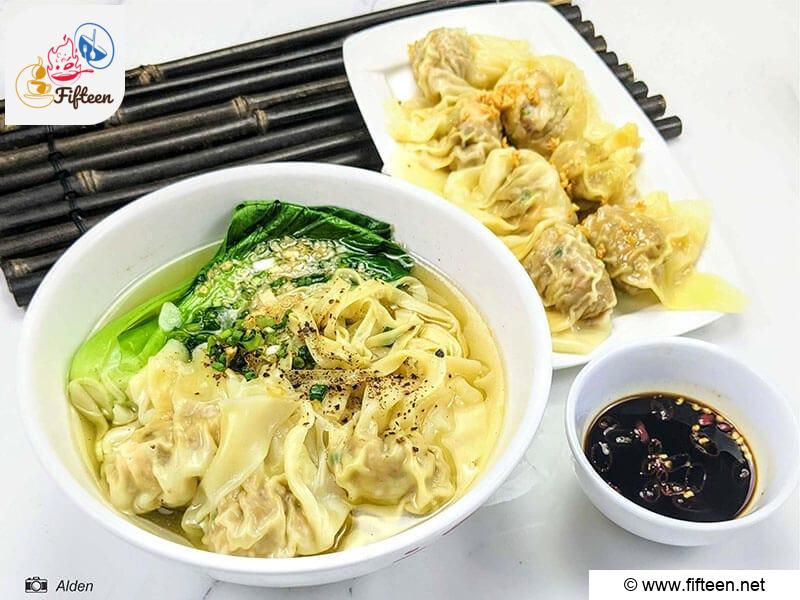
Wonton Noodle Soup – Mì Hoành Thánh
Ingredients
- 0.55 pounds (250 grams) shrimp
- 0.77 pounds (350 grams) ground pork
- 1 white radish: Add sweetness to the broth.
- 0.22 pounds (100 grams) bok choy
- 0.44 pounds (200 grams) egg noodles
- 0.44 pounds (200 grams) wonton wrappers
- 6.5 cups (1.5 liters) chicken stock
- 1 ounce (30 grams) scallions
- 1 tablespoon soy sauce
- 1 teaspoon sesame oil
- 1 teaspoon oyster sauce
- 1 tablespoon tapioca flour
- 2 tablespoons fried garlic
- 2.5 tablespoons sugar
- 2 tablespoons salt
- 1 tablespoon pepper
Instructions
- Cut the white radish into equal, round slices.
- Finely chop the scallions.
- Use the face of your knife to smash the shrimp.
- Combine the shrimp and ground pork in a bowl together with soy sauce, sesame oil, tapioca flour, minced garlic, sugar, salt, pepper, and chopped scallions.
- Mix well to infuse the filling with all the spices and seasonings.
- Wrap the filling bowl with food wrap and refrigerate it for about 30 minutes.
- Pour the chicken broth and white radish into a pot.
- Cook it over medium heat for about 20 minutes.
- Afterward, season the broth with salt and sugar.
- Scoop a spoonful of filling onto a wonton wrapper.
- Fold it by bringing the edges together, then gently seal the wrap (see the included photo and video for a clearer demonstration).
- Repeat the above steps for the rest of the wrappers.
- If you have some leftover filling, you can shape it into small meatballs and cook them together with the wontons.
- Bring a pot of water to a boil over high heat.
- When the water has come to a full boil, add the noodles and stir them with chopsticks to prevent them from sticking together.
- After 3 minutes, drain them using a sieve, then transfer them to an ice bath.
- Drain the noodles once more and put them in a bowl.
- Bring another pot of water to a boil.
- Blanch the bok choy for about 4 minutes, then put them into an ice bath.
- Pour water into a pot, then immediately add the wontons.
- Boil the wontons for 5 to 7 minutes.
- During cooking, gently stir the wontons using chopsticks to keep them from sticking to the pot.
- Once the wontons start floating above the water, they are cooked.
- Place the noodles in serving bowls and put the wontons and bok choy over them.
- Sprinkle fried garlic, scallions, and pepper on top.
- Pour the broth into the bowls and enjoy.
Video
Notes
- The cooking time above is based on 4 servings of Mi Hoanh Thanh.
- Do not store the wonton wrappers in the fridge, as they will be more prone to tearing.
- In addition to smashing the shrimp, you can also mince or grind them.
- Avoid overfilling the wrappers.
- Try not to overcook the wontons since the wrapping will turn mushy.
- For the clearest broth, avoid cooking the noodles and wontons in the stockpot.


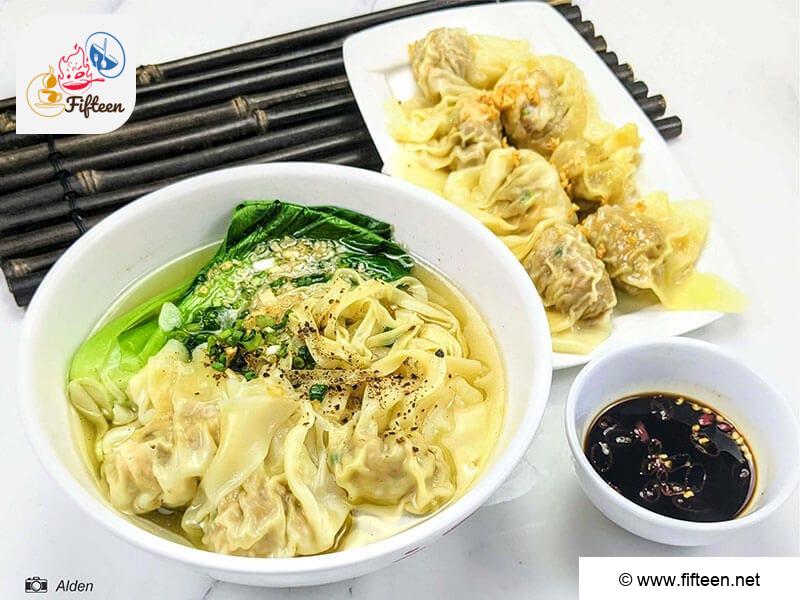
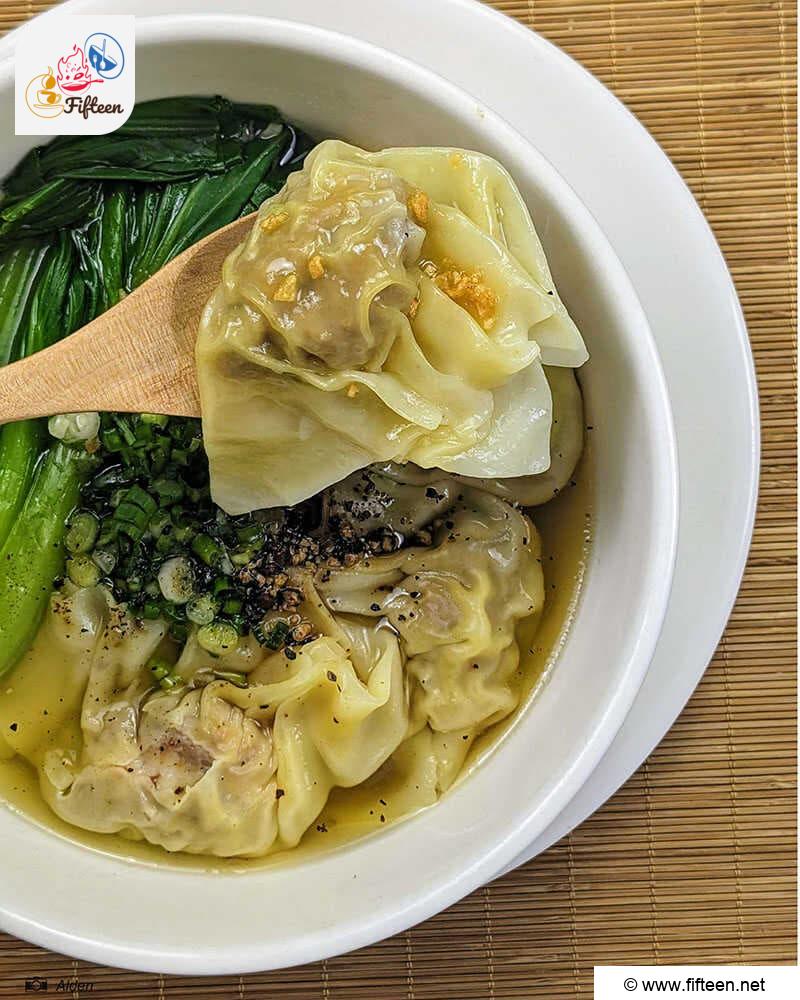
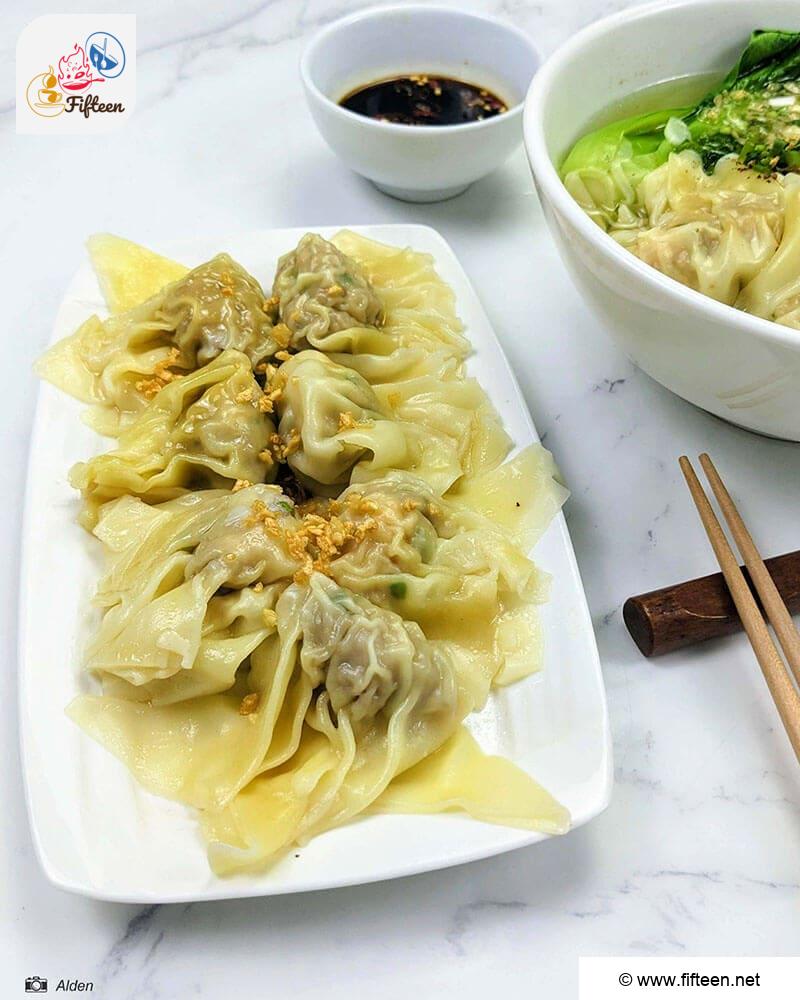
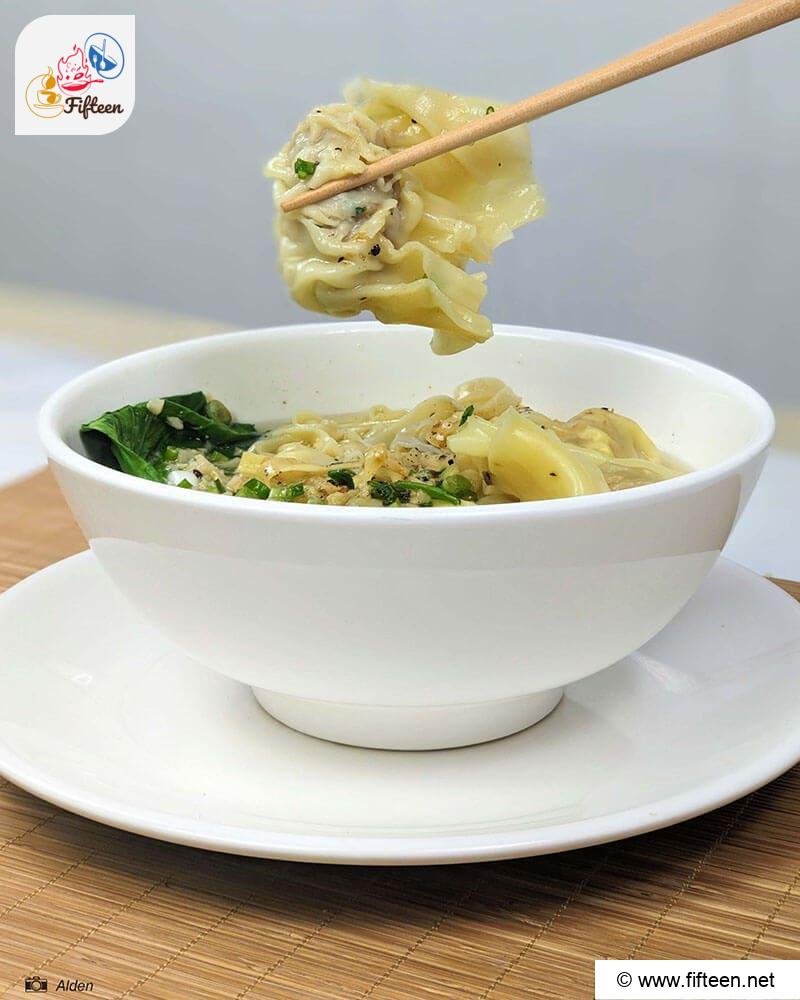
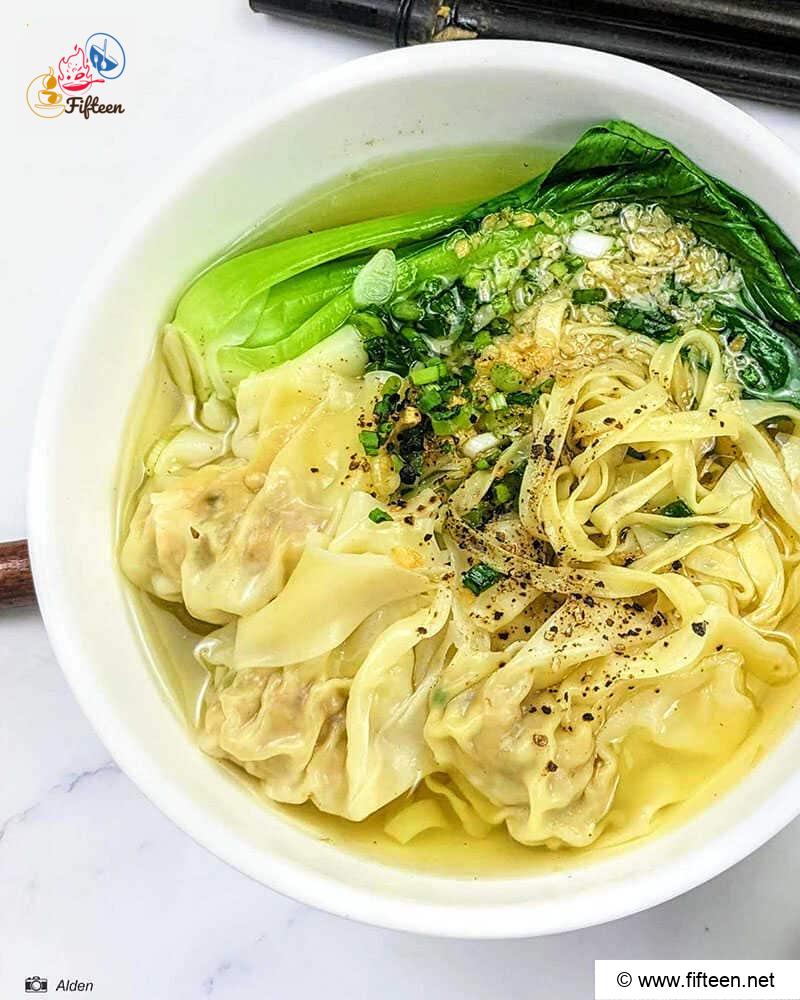
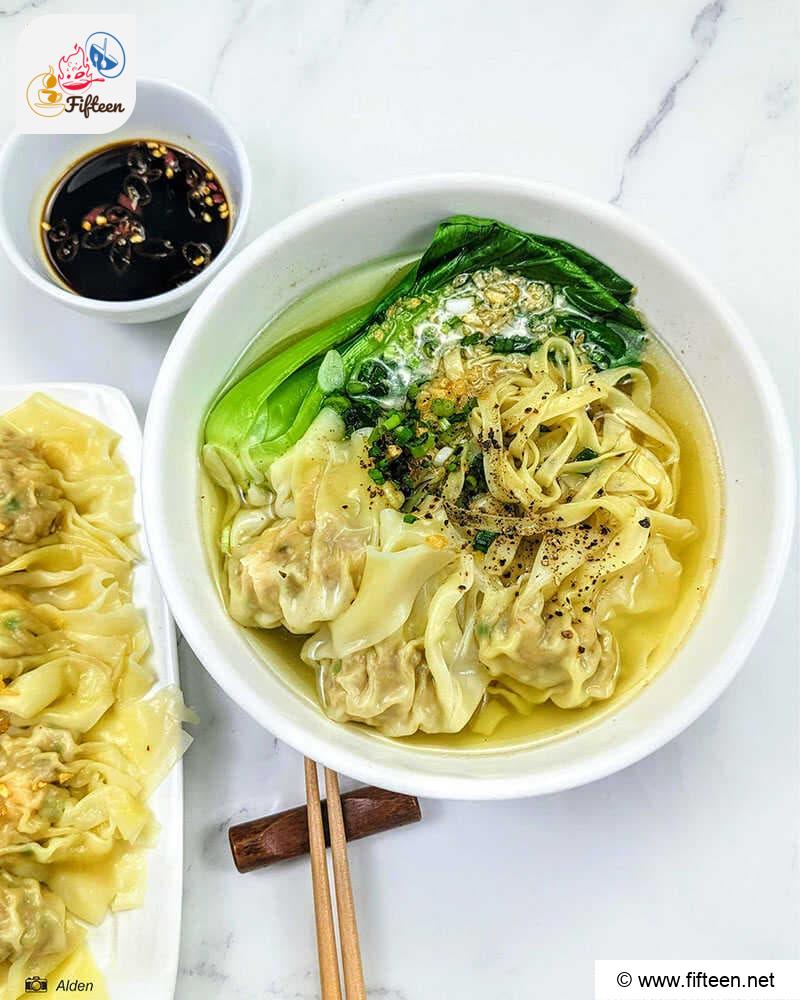
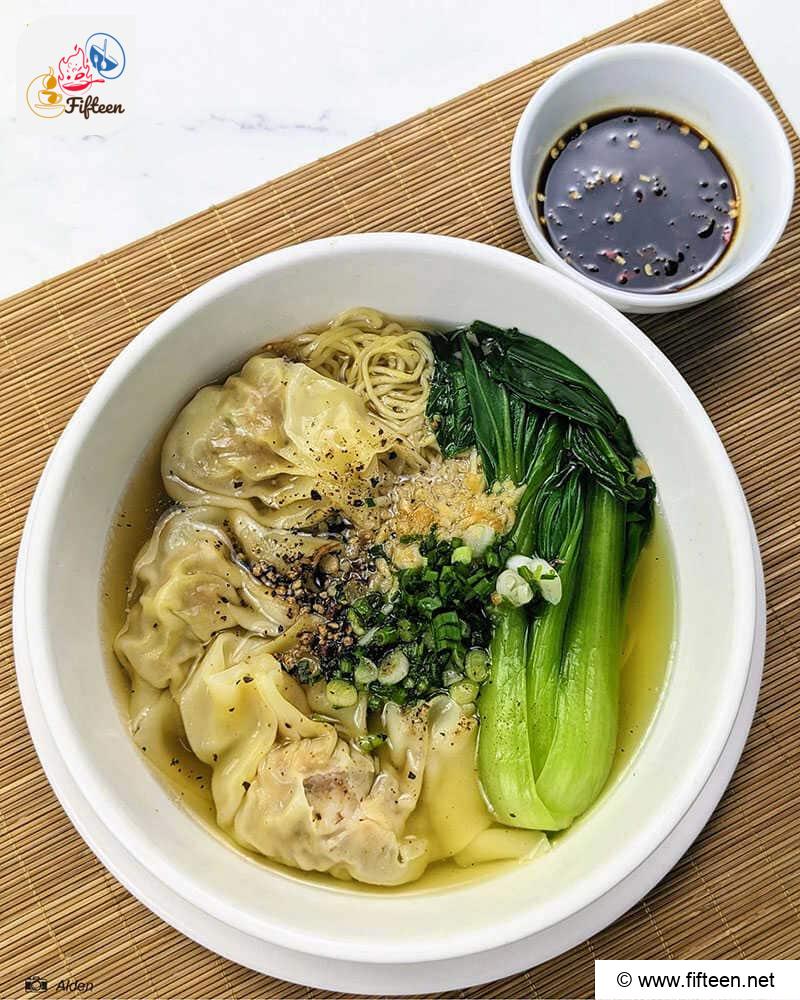
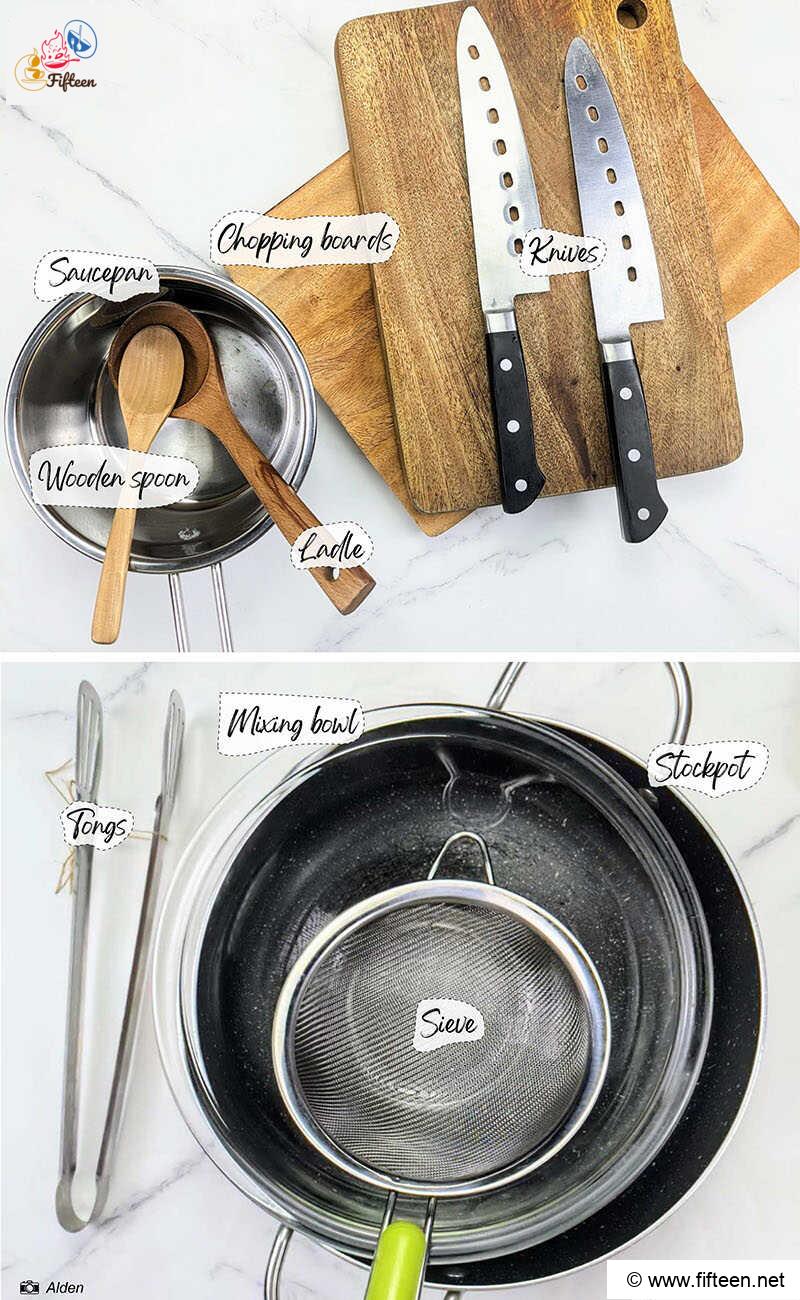
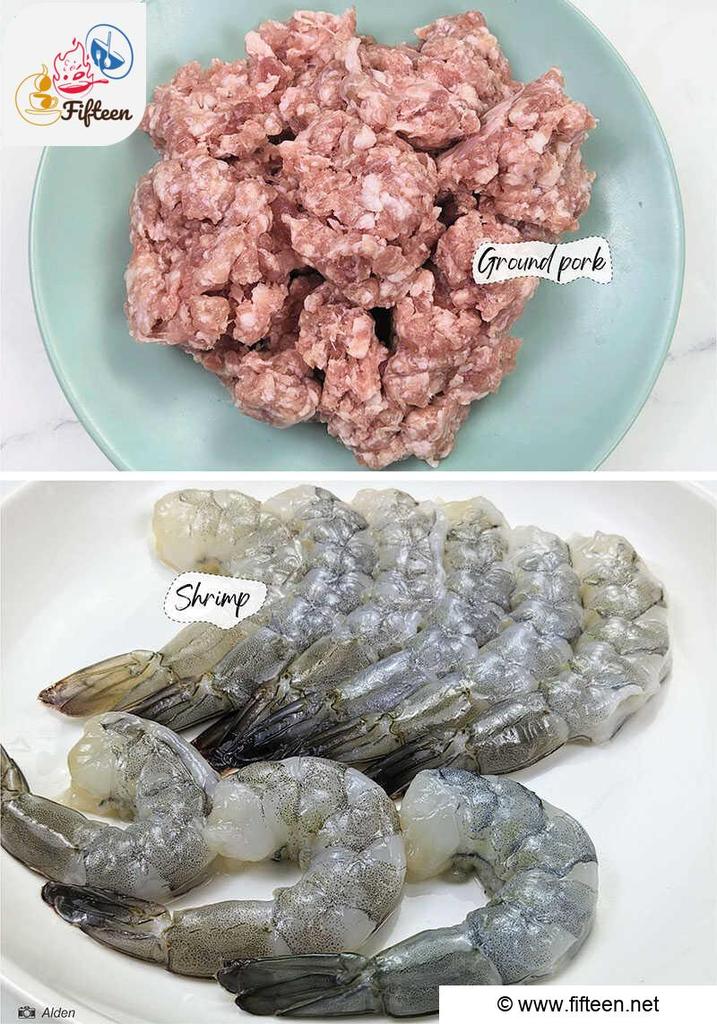
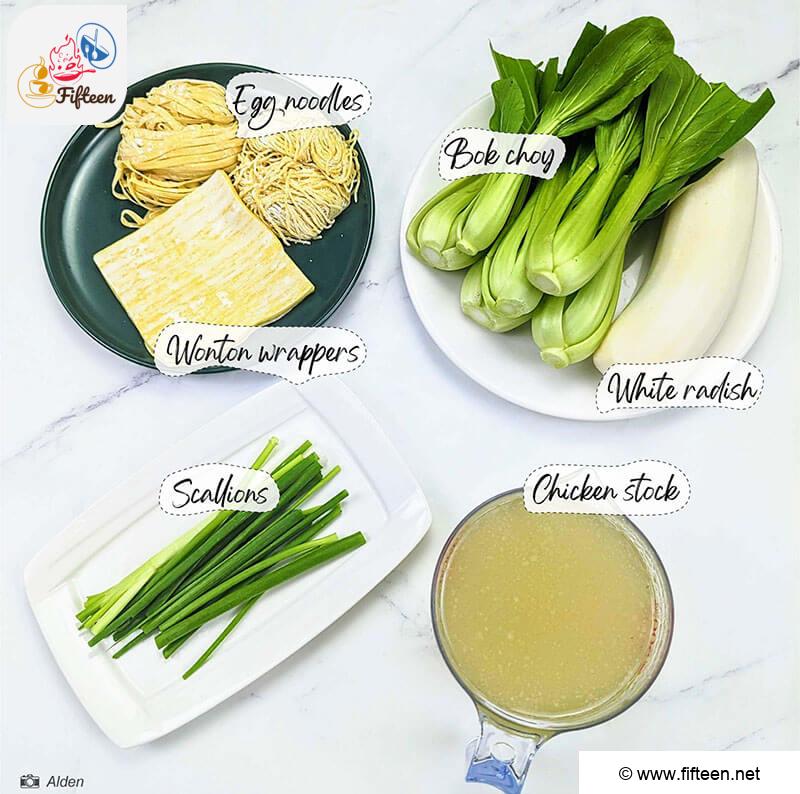
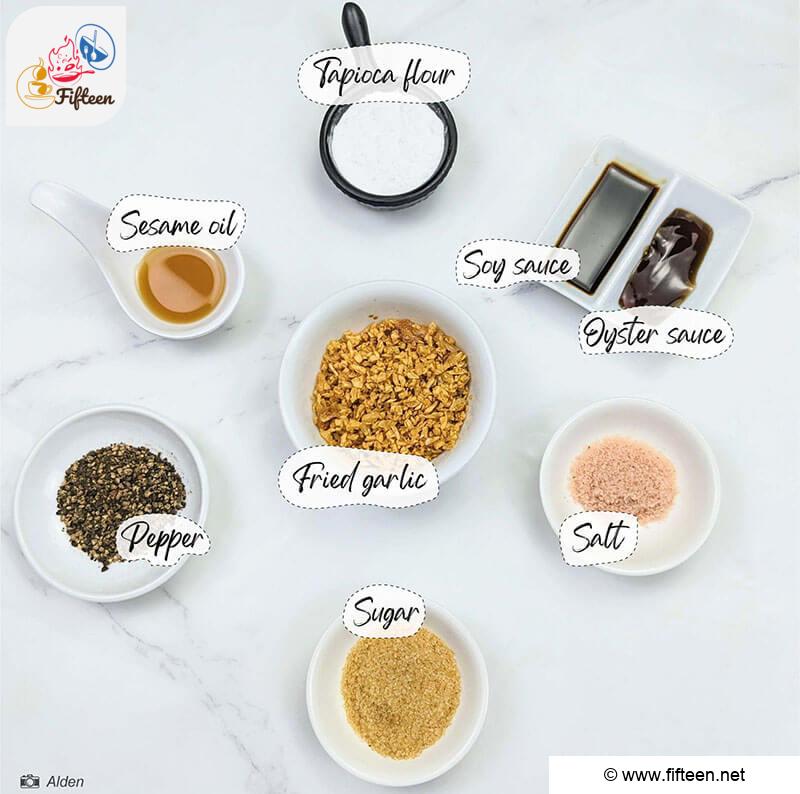
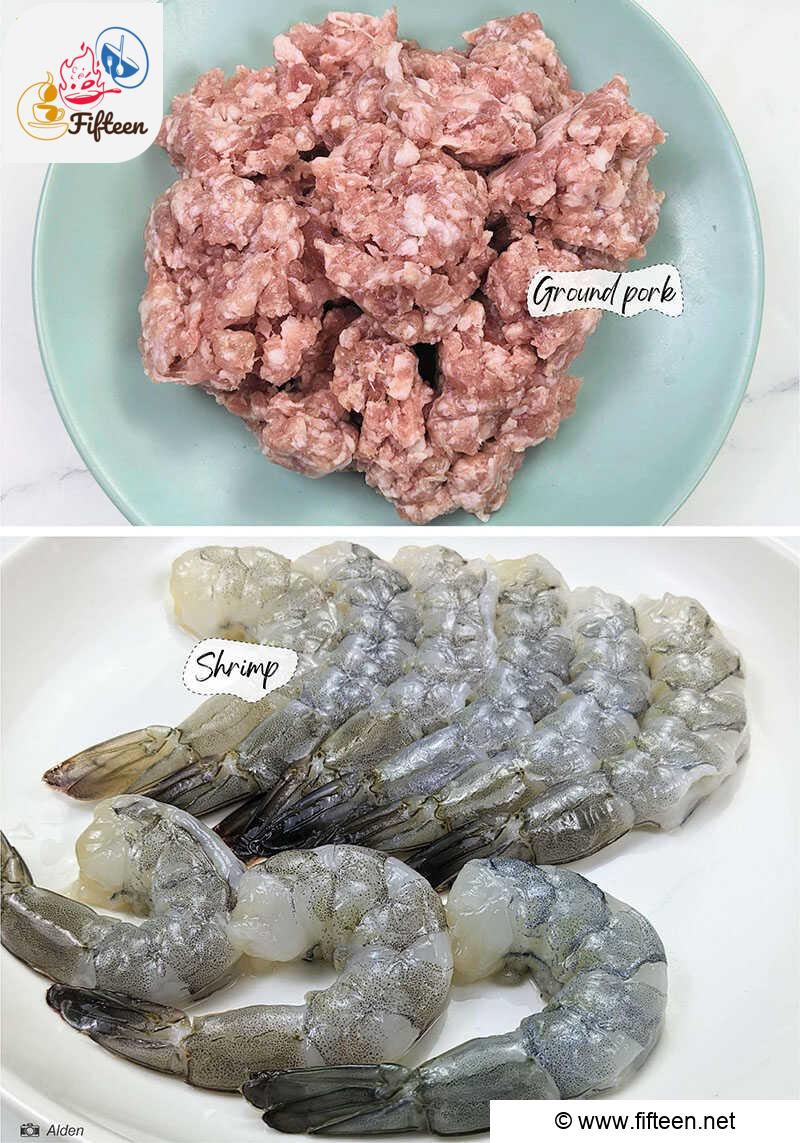
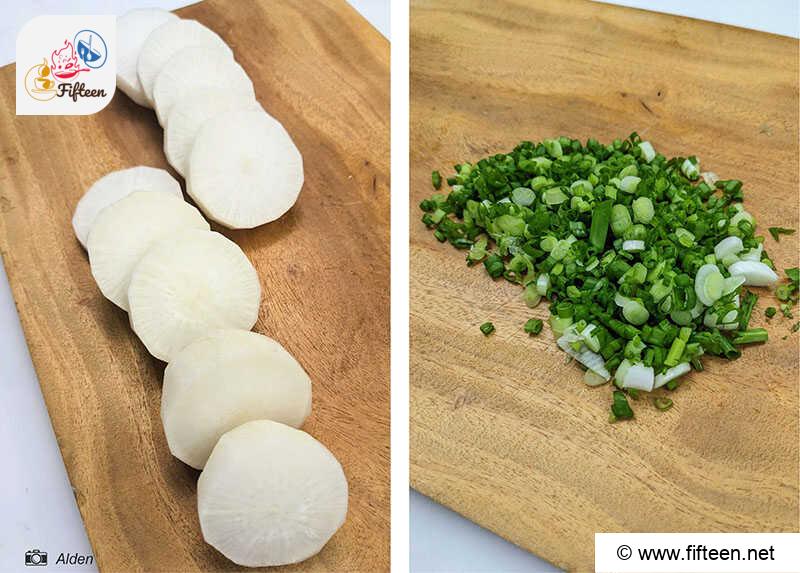
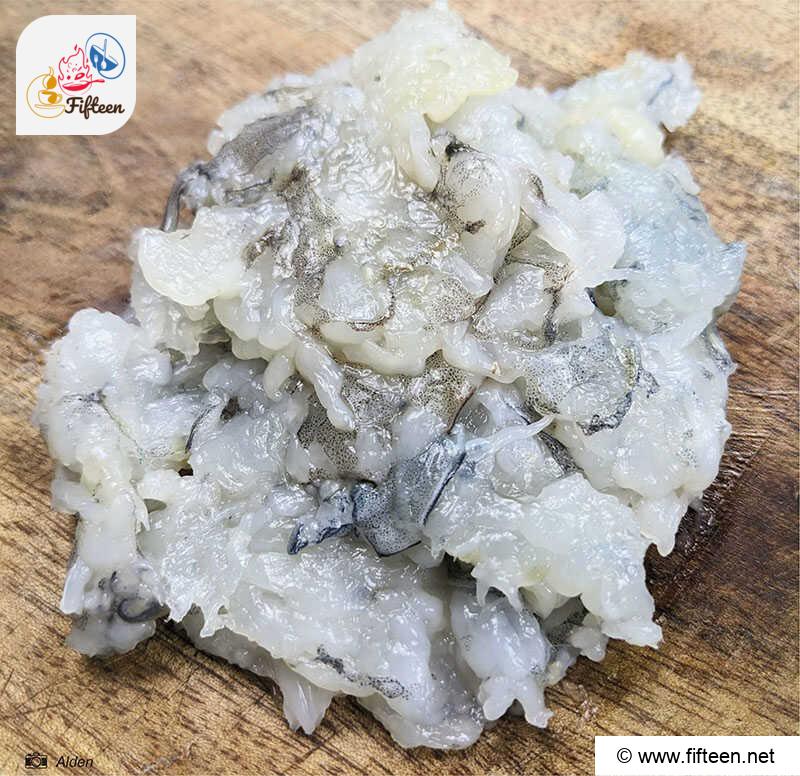
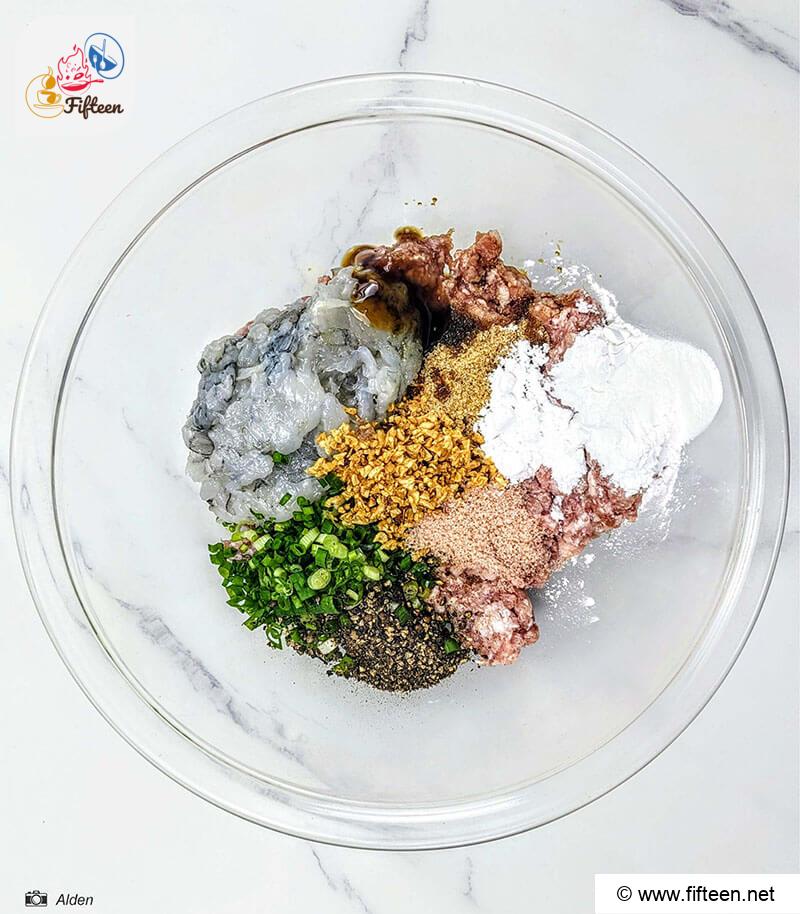
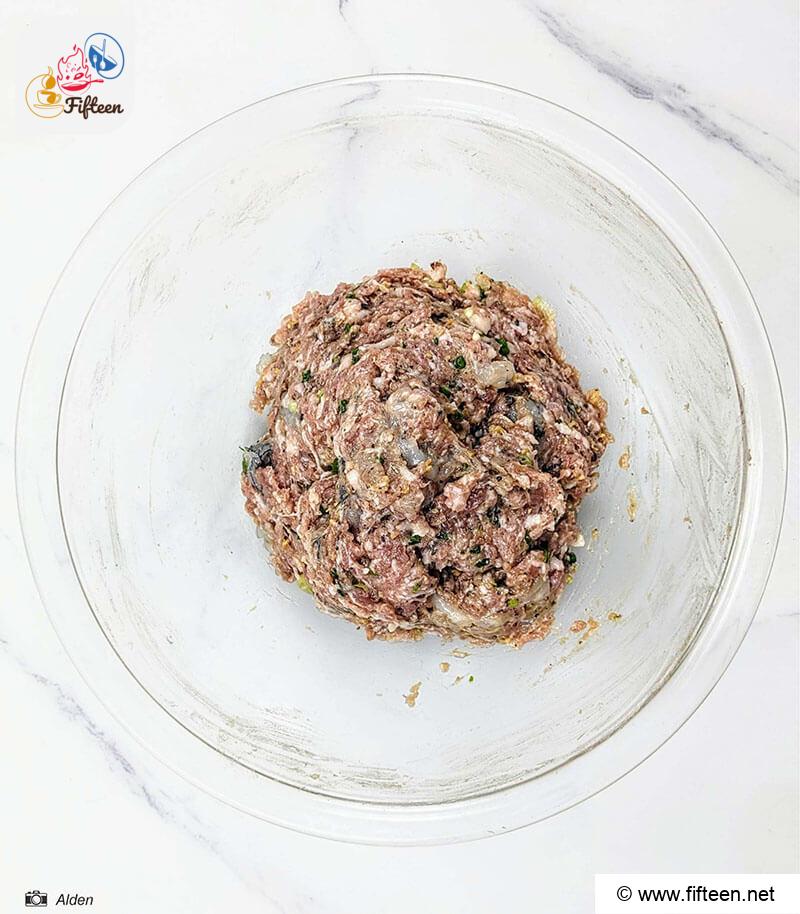
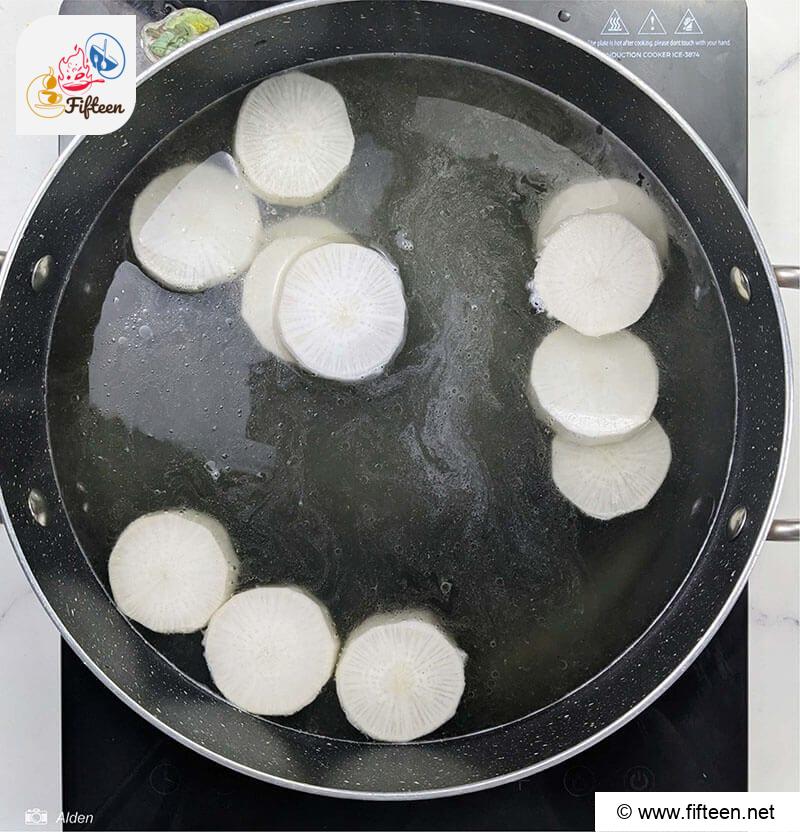
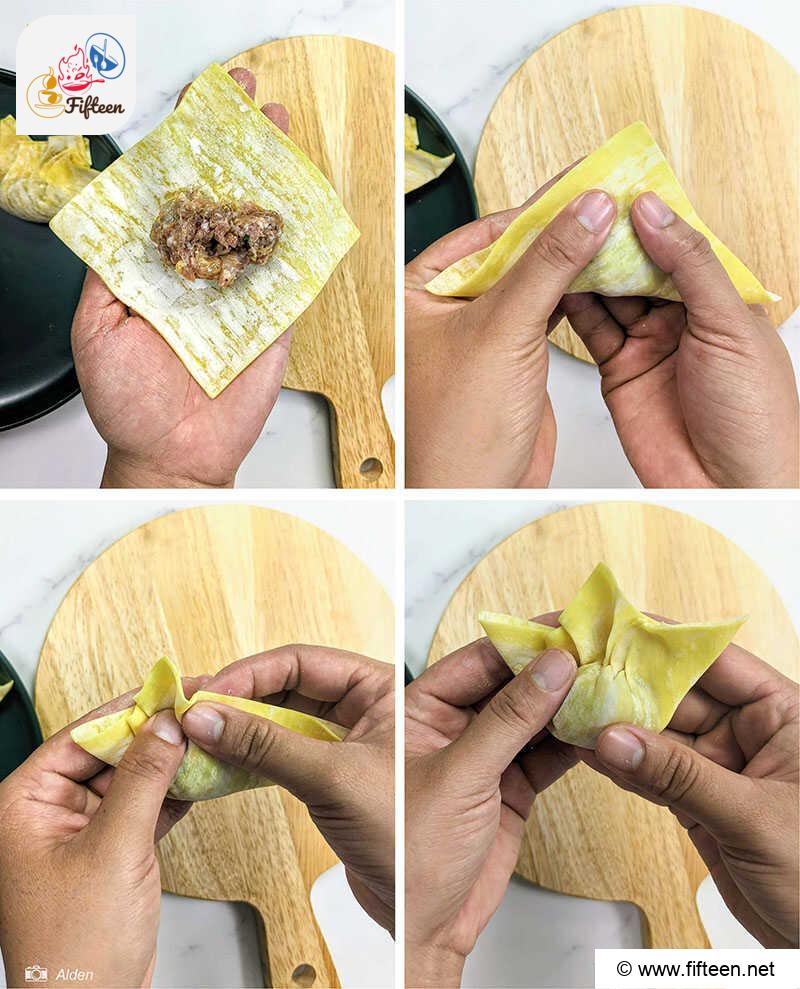
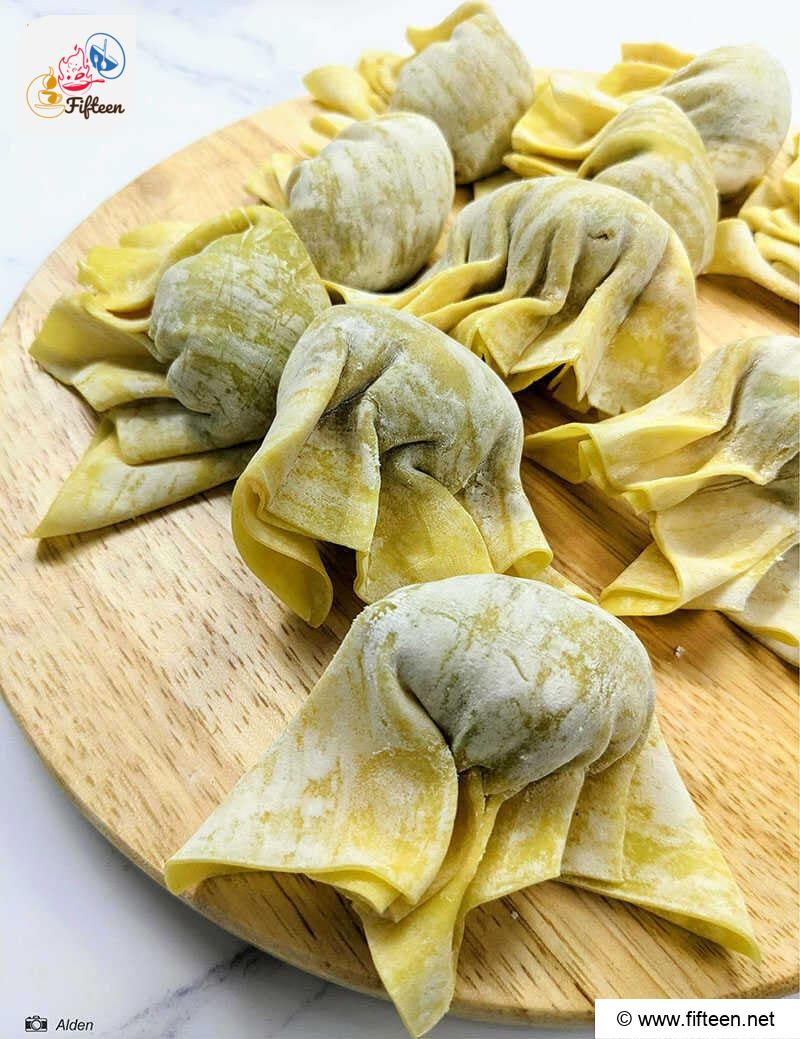
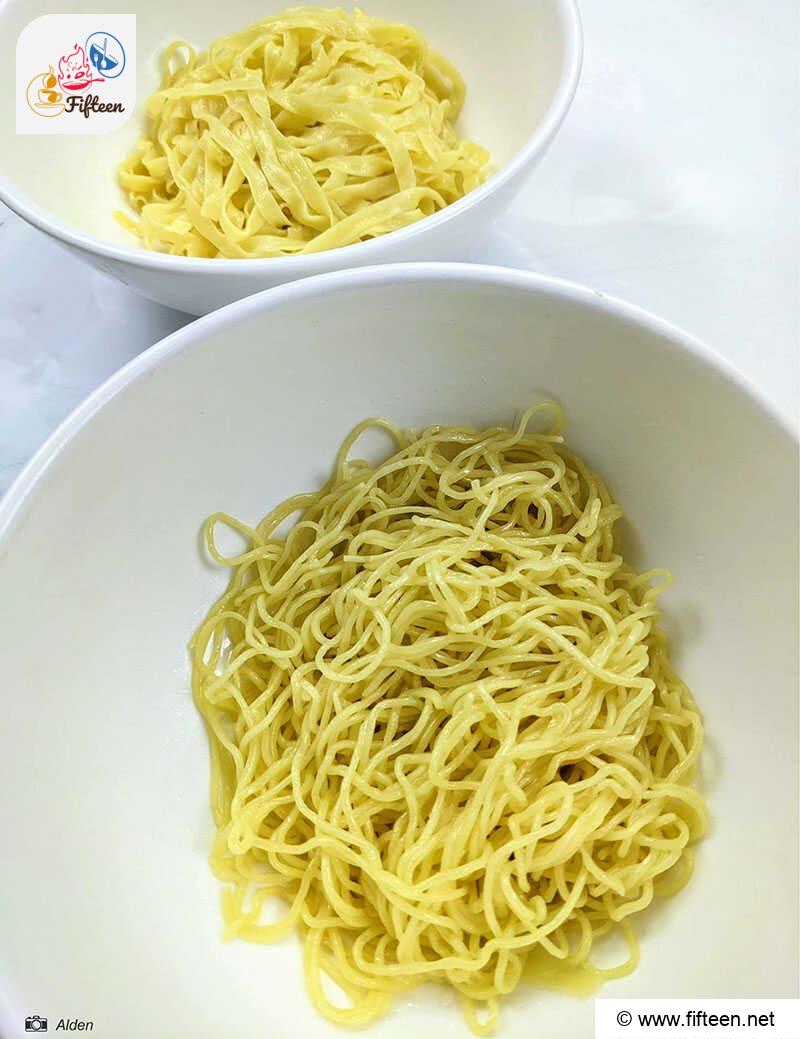
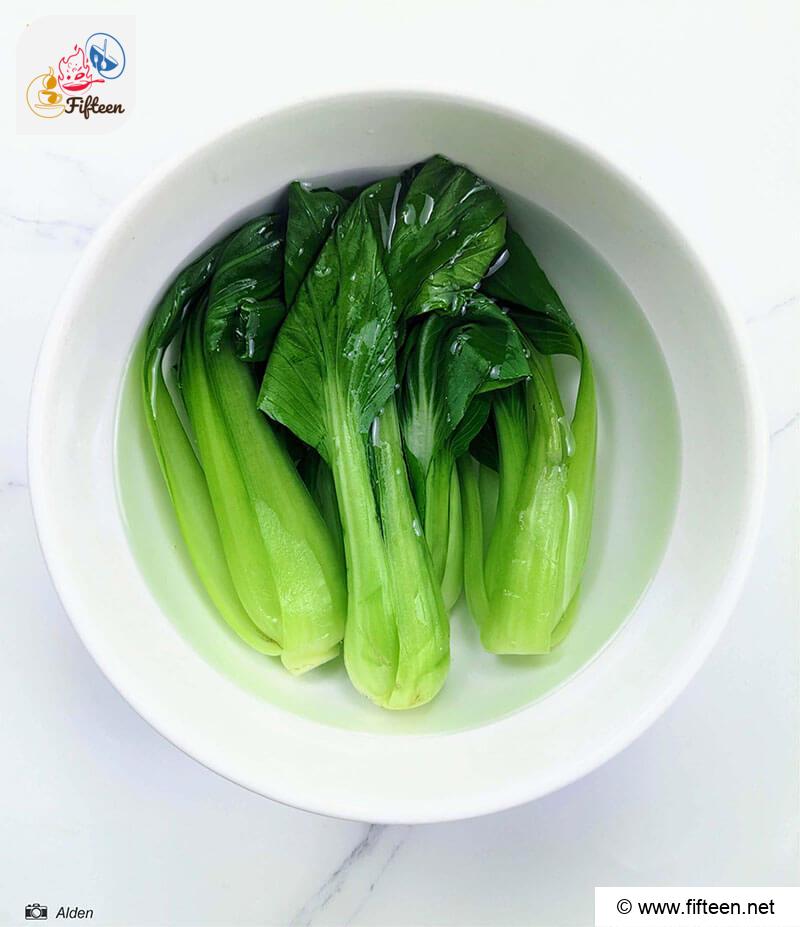
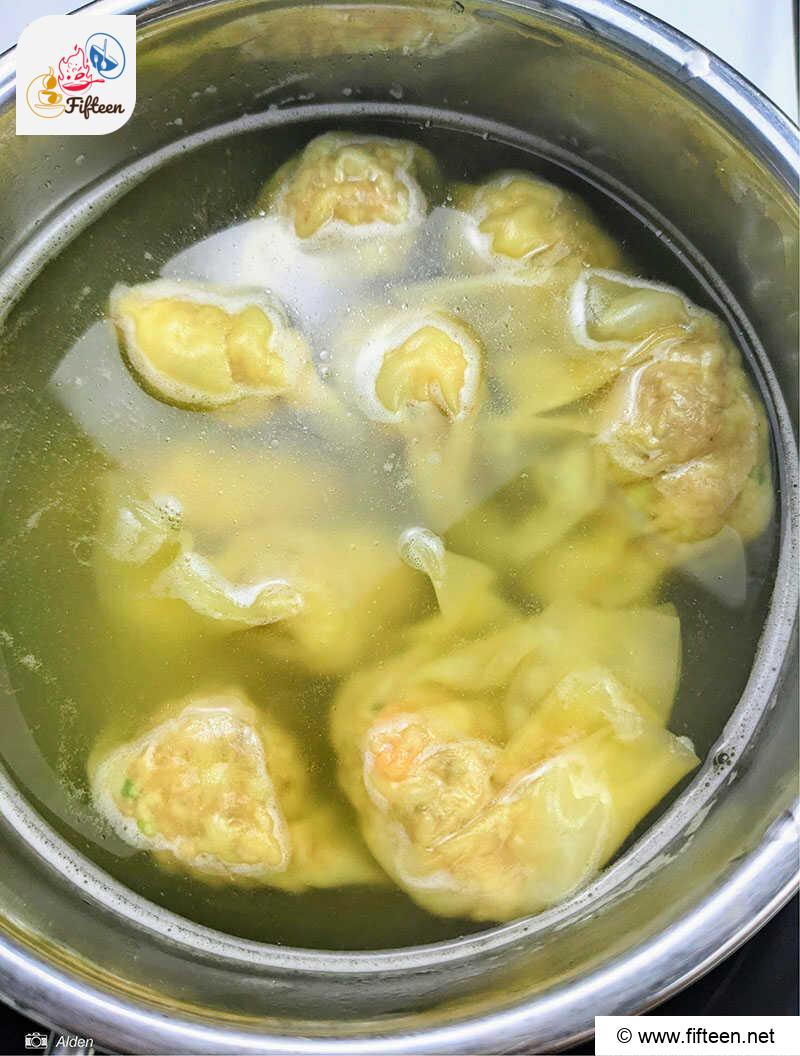
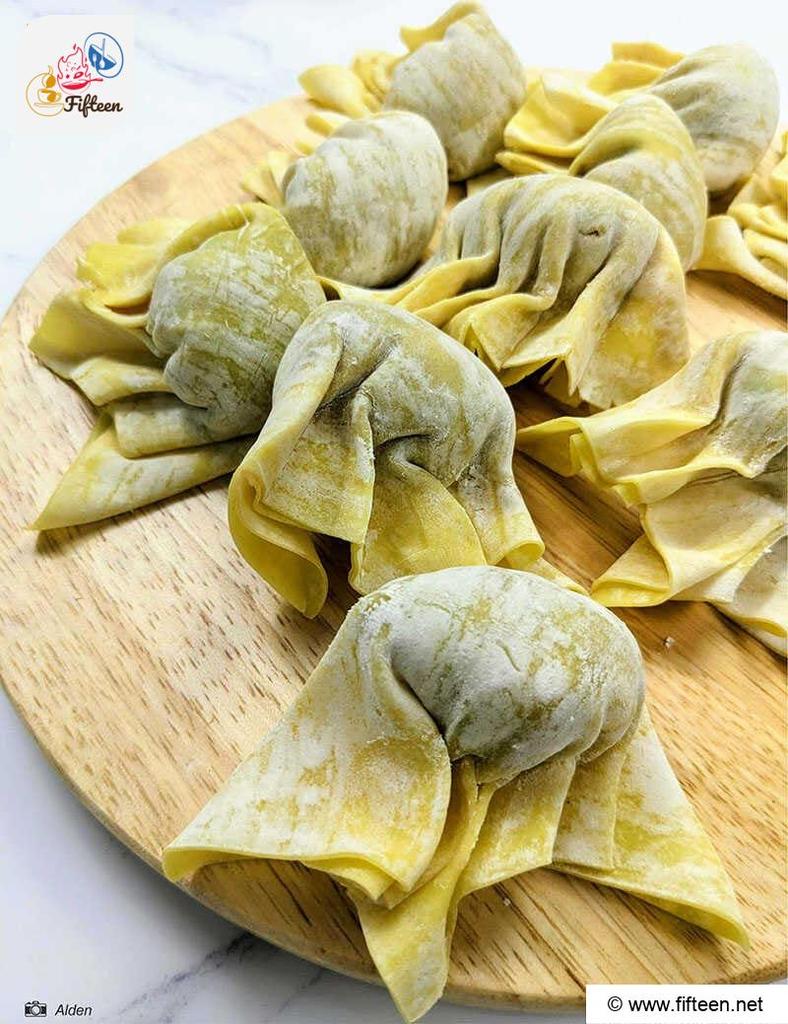
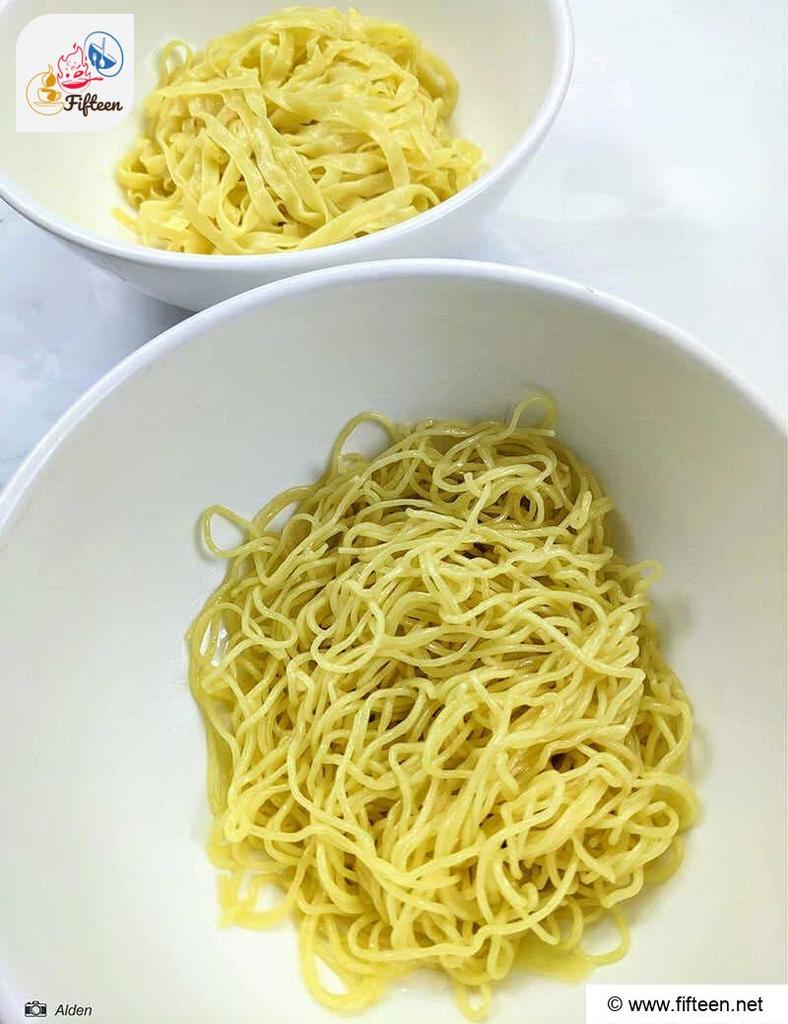
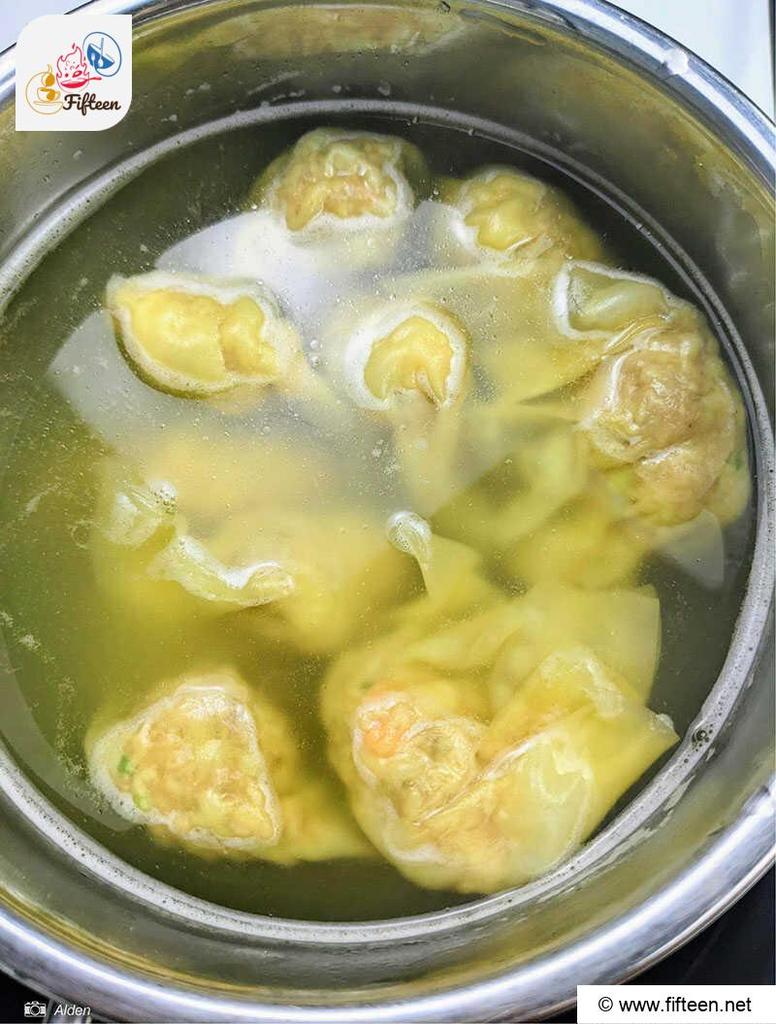
Tien – Alden
Content Writer
Expertise
Home Cooking, Recipe Development, Food Editor, Beverage Editor, Cooking-video Maker, Asian Food Content Creator
Education
Saigon Tourism College
Advanced Culinary Workshop, Beijing
Vietnamese Traditional Cooking School
American College of Vietnam
Alden is a skilled chef with expertise in Asian cuisines, known for blending traditional Vietnamese and Chinese cooking with contemporary innovations. Alden’s passion for Asian flavors and her creative approach to both food and beverages inspires fellow chefs and those aspiring to enter the field.